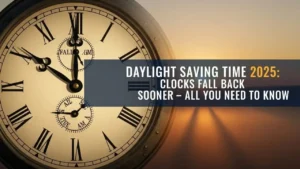You don’t need to camp outside a courthouse to witness the growing wave of protest against Immigration and Customs Enforcement (ICE) in 2025. All you have to do is open TikTok.
Across the platform, LGBTQ+ creators, activists, and allies have transformed public demonstrations into a mix of performance art, satire, and unapologetic resistance. What you’ll find is a blend of humor and defiance that feels both surreal and intentional.
A New Form of Protest: Performative, Playful, and Powerful
One moment, you’re watching a gay man dancing in front of ICE agents, testing their patience with bold confidence and zero fear. Scroll once, and suddenly you land on someone dressed in a giant inflatable frog suit, leading protest chants with the enthusiasm of a marching band conductor.
Also Read
These aren’t isolated moments—they’re part of a larger cultural pushback shaping the political climate of 2025. Crowds across the country raise “Abolish ICE” banners at concerts, games, and mass gatherings, capturing footage that blends political outrage with viral creativity.
Each clip feels absurd, joyful, and rebellious at the same time. Together, they build a narrative: protest is no longer just a gathering—it’s a performance medium, and the camera is an active participant.
The Rise of Joyful Resistance
If past eras relied on bullhorns, today’s protests sound more like choir rehearsals.
In Portland, a senior LGBTQ+ choir known as the Portland Sage Singers—made up of members ages 55 and older—performed protest songs outside the local ICE facility. Dressed in pink rain ponchos, they sang with Broadway-level precision. One member, age 90, told reporters they had sung similar hymns during Vietnam War protests decades earlier.
The videos of their performance went viral not for shock value, but because of their warmth and humanity. In a digital landscape often defined by outrage, the sight of a multigenerational queer choir harmonizing at a protest felt like a breath of fresh air.
In another widely shared clip, 82-year-old veteran Fred Pereira calmly explains why he continues to attend protests—his experience with actual military operations, he says, gives him perspective on why comparing ICE to soldiers is misguided. His quiet conviction stands out amid the noise.
These aren’t just peaceful protests. They’re living, breathing art pieces—moments where solidarity becomes spectacle.
Frogs, Furries, and Firefighters: Protest as Camp
Humor has long played a role in LGBTQ+ activism, and 2025 takes that tradition to new heights.
Footage shows furries marching beside protesters with handmade signs. Another clip shows a protester dancing in front of a barricade as though it’s a runway. Both earn millions of views because they subvert expectations—turning seriousness into satire, fear into farce.
In a separate viral moment, firefighters are seen escorting ICE agents away from a neighborhood during a community clash. The crowd erupts, and TikTok’s comment section treats the firefighters like folk heroes.
These scenes resonate because they flip power dynamics. ICE represents control; queer communities respond with coordinated chaos, humor, and theatricality. The result is resistance that doesn’t hide its personality.
Drag Queens and Dora: The Power of Persona
Drag has always been political, and today’s creators wield it like a megaphone.
During LA Pride, Drag Race star Alaska Thunder** used her performance to call attention to ongoing ICE raids across Los Angeles County. Mid-show, she shifted from entertainment to activism, urging crowds to stay engaged and support affected communities.
In West Hollywood, a drag queen named Pickle organized a street protest in full glam on the Fourth of July, rallying people after reports of a daytime ICE raid at a local car wash. The video captures a mix of fury, glitter, and determination.
Then there’s Dora the Explorer—or at least someone dressed convincingly as her—leading chants in Los Angeles. It’s satire, symbolism, and protest rolled into one.
Allies Join In: Firefighters, Union Workers, and Even Celebrities
The movement extends beyond LGBTQ+ communities. Allies, both famous and everyday, amplify the message.
Actor Matthew Lillard appears in one clip speaking passionately about immigration justice at a community event. His words spread quickly across social media, reinforcing the idea that resistance doesn’t belong to one group alone.
In Chicago, union ironworkers march alongside activists, their presence adding a layer of working-class solidarity. In other clips, police officers—while not acting against their duties—publicly criticize ICE’s methods, rejecting the agency’s tactics from within law enforcement culture.
The growing coalition shows that public empathy remains strong, and that viral protest can unite groups who might not otherwise share the same political spaces.
Does Viral Protest trivialize serious issues?
Some critics argue that turning immigration policy into meme-friendly moments risks downplaying the severity of deportations and family separations. It’s a fair concern. But visibility, especially among younger audiences, often begins with what grabs attention.
In a world where political messaging competes with entertainment, humor can cut through the noise. Viral content doesn’t erase the seriousness; instead, it often becomes a gateway for deeper conversations.
Emotion drives engagement, and these clips deliver a wide spectrum—joy, anger, hope, absurdity. The spectacle is intentional, not accidental.
TikTok as the New Front Line
In 2025, activism no longer ends when the protest wraps. It continues through edits, duets, stitches, and remixes. A chant becomes a meme. A drag queen’s speech becomes an audio trend. An elderly veteran’s words become a stitched response to thousands of creators.
ICE may represent state power, but on TikTok, its image is repeatedly deconstructed, parodied, and reframed by the communities it impacts.
The new wave of protest is not quiet or uniform. It’s frogs in body paint, seniors singing, furries marching, drag queens shouting through microphones, firefighters stepping into unexpected roles, and allies showing up from every corner.
It’s queer, it’s communal, and it’s designed for an audience—because when justice marches in 2025, it doesn’t whisper. It performs.












